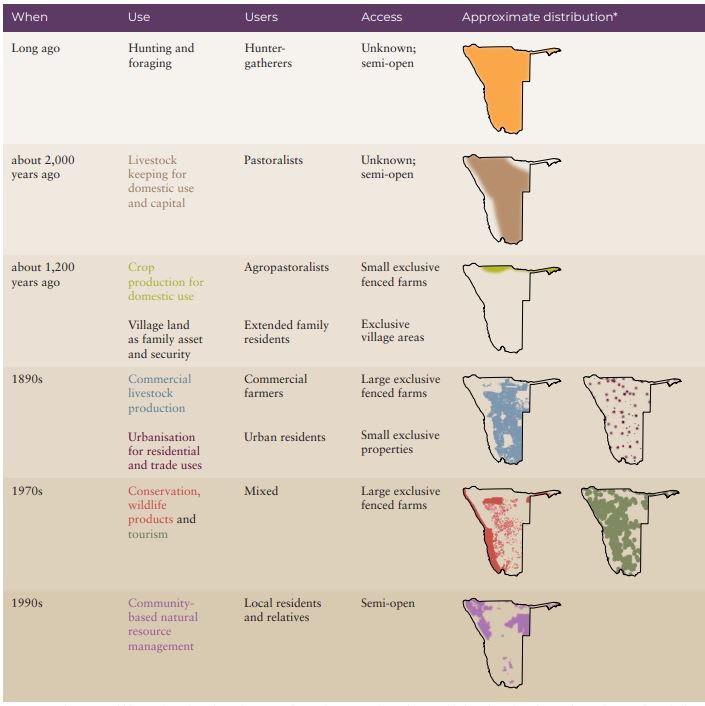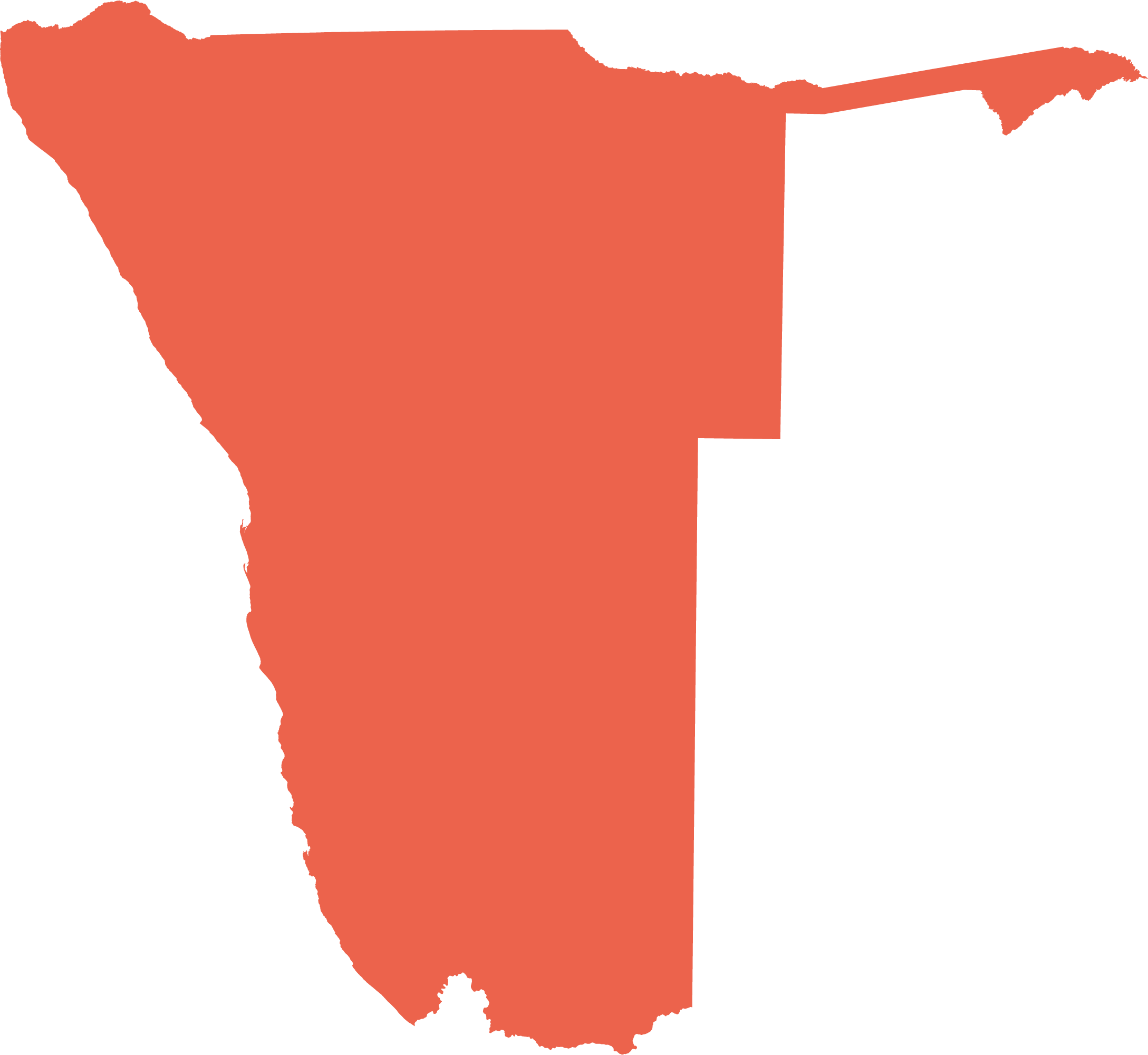The use of land
The use of land is typically determined by the availability of natural resources and their value, which often depends on access to markets. A single use of land normally predominates where the land provides a resource with a high value, such as a mineral deposit. However, much of the country is not well suited to just one land use. Land uses are thus often varied and employ several mechanisms to generate income, which may include farming a variety of livestock, cropping, game breeding, tourism and hunting, among others. This provides diverse incomes and greater economic stability: if one activity fails, there are others to fall back on. Most rural families also have off-farm incomes from retail trade, grants, remittances, or employment. This diverse approach is in stark contrast to traditional subsistence living. Moreover, many wealthy urban residents keep livestock in rural areas on communal land, or on freehold or resettlement farms.
Land is normally valued as a productive asset, one that can deliver income on a regular basis, for example by selling beef or crops or from hosting tourists or trophy hunters. Policies and legislation often disregard the security or investment (i.e. capital) value of land. Yet, most Namibians gain from rights to capital – social, livestock and land – in their villages, while many others invest their savings in 'weekend farming'. There are five principal uses of land in Namibia today: farming, conservation, tourism, mining, and urban land uses. These are described in more detail on the pages that follow. Note that land uses are often neither exclusive nor fixed, and so much of the information presented in this chapter reflects on trends and change in Namibia, rather than being a definitive assessment of what is on the ground.

Photo: P Cunningham
Southern and western Namibia are best suited to sheep and goats because the fodder value and biomass of plants in these arid areas is usually too limited for cattle. Browse, from woody shrubs and other herbaceous plants, is a more reliable source of food than graze because many grasses require dependable seasonal rainfall. Making a living in these extremely arid areas is now harder than it was 60 years ago. This is not because of lower production or market prices, but because rising living standards now require higher incomes to make an acceptable living. Better cars, bigger houses, more symbols of status and more expensive education are often seen as essentials. It is for this reason that many farms in southern and western Namibia are no longer only used for livestock production.

Photo: J Mendelsohn
Livestock have two broad uses in Namibia, and elsewhere in Africa. One is commercial production by farmers who breed cattle, goats, sheep, poultry and pigs to sell them. The second is the traditional use of livestock as capital assets or savings – to store and build wealth.3 Investments in livestock in communal areas can provide substantial returns because grazing and water are free, and labour is cheap. The animals are used when necessary, nowadays often to provide money for special needs. Chickens are sold when small sums are required; sheep or goats when more money is needed, and cattle for major expenses. Traditionally, livestock are used in the same way for special occasions, for example to feed valued guests, or at funerals, weddings and other gatherings. Pastoral societies, such as those in northwestern and southern Namibia, and in former Hereroland make more varied uses of livestock to provide both regular sources of food and savings, while agropastoralists in northern and northeastern Namibia mainly keep their animals to store and produce capital. However, these differences are blurring as the need for regular incomes grows, and livestock keepers diversify their investments.
8.01 Introduction of new, major land uses in Namibia

After tens and probably hundreds of thousands of years of people hunting and gathering, several new uses of land were added to Namibia's landscape during the last two thousand years, for example: pastoralism; crop, beef, mutton, game and wool production; conservation and tourism; urban settlement; and industry. The sequence and approximate timing of the introduction of these and other land uses is shown in this table. The new uses were associated with the movement of Khoekhoegowab-speaking pastoralists and Bantu pastoralists and agropastoralists into Namibia and, later, with European farmers.
Land was probably neither owned nor controlled in any formal sense during most of Namibia's past. Rather, access to land was probably 'semi-open'. Families, clans, and other groups of hunter-gatherers would have controlled areas immediately around them, but access to most unoccupied areas was likely open. Tenure systems to control, own and add value to land then changed as new land uses were introduced, since different uses of land required different ways to protect, manage and own land rights. Each change led to the division of the country into more parcels while providing land users with greater security and exclusive control of their land.

